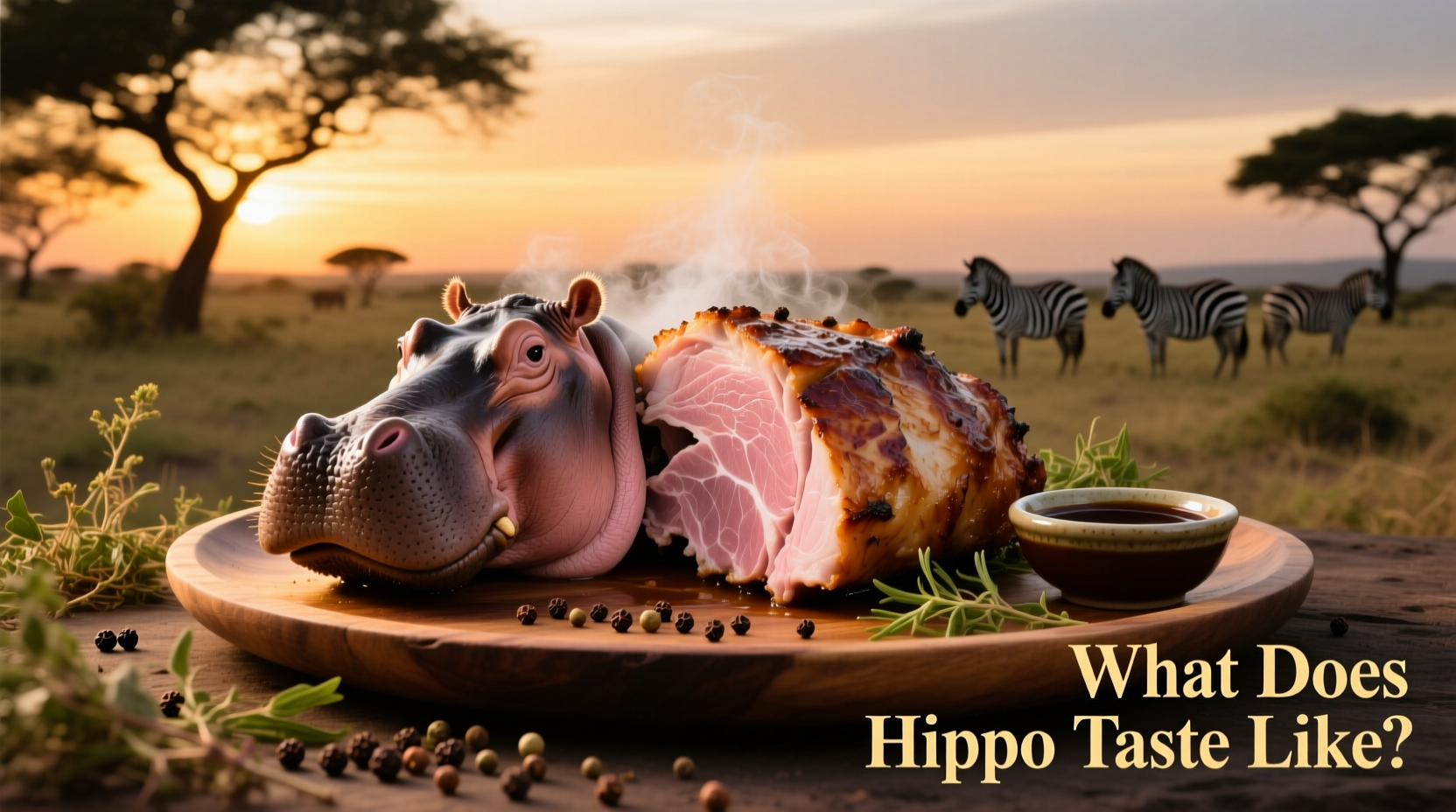Curiosity about exotic meats often leads people to wonder: what does hippo taste like? While historical accounts provide some insights, modern ethical and legal considerations make this more than just a culinary question. Understanding hippo meat requires examining historical context, conservation status, and the realities of wildlife protection in the 21st century.
Historical Context of Hippo Consumption
Historical records from Central and East Africa indicate that hippo meat was occasionally consumed by certain indigenous communities before modern conservation efforts. Unlike elephants or rhinos, hippos weren't primary targets for bushmeat due to the significant danger involved in hunting them. When consumed, the meat was typically prepared through slow-cooking methods to tenderize the tough fibers.
| Time Period | Hippo Hunting Status | Primary Consumers |
|---|---|---|
| Pre-1900s | Unregulated | Local river communities |
| 1900-1970s | Increasingly regulated | Commercial hunters, limited local consumption |
| 1976-Present | Protected under CITES Appendix II | Illegal consumption only |
This conservation timeline shows how hippo protection has evolved from unregulated hunting to international protection. The 1976 inclusion in CITES Appendix II marked a critical turning point when hippo populations had declined significantly from historical levels.
What Historical Accounts Reveal About Flavor
Based on limited historical documentation from explorers and anthropologists, hippo meat is described as having a gamey flavor profile similar to beef but with stronger wild characteristics. The fat content appears to be lower than domestic beef, contributing to a leaner, drier texture when cooked. Early 20th century accounts from Central Africa noted that the meat required careful preparation to avoid toughness.
"The flesh resembles beef in color but has a coarser grain and distinctive flavor that some describe as earthy," noted anthropologist Richard K. Morris in his 1928 field notes from the Congo Basin. These descriptions align with what we know about large herbivore meat biology—hippos' primarily grass-based diet would produce meat with certain flavor compounds common in grazing animals.

Modern Conservation Status and Legal Protections
Today, the common hippopotamus (Hippopotamus amphibius) is listed as Vulnerable on the IUCN Red List, with populations having declined by 7–20% over the past decade. The International Union for Conservation of Nature reports approximately 115,000-130,000 hippos remaining in the wild, concentrated primarily in East Africa.
International trade in hippo parts, including meat, is regulated under CITES Appendix II, which requires export permits to ensure trade doesn't threaten species survival. Many African nations have implemented complete hunting bans, with countries like Kenya imposing severe penalties for hippo poaching.
Ethical Considerations for Modern Food Enthusiasts
For those curious about game meat flavors, ethical alternatives exist that satisfy culinary exploration without threatening vulnerable species. Sustainable options include:
- Legally farmed bison or elk with similar gamey profiles
- Certified sustainable venison from regulated hunting programs
- Plant-based alternatives that mimic game meat textures
Responsible culinary exploration respects both animal welfare and ecosystem balance. The decline of hippo populations—from an estimated 150,000 in the 1990s to current levels—demonstrates how quickly vulnerable species can disappear when subjected to hunting pressure.
Scientific Perspective on Hippo Meat Characteristics
From a biological standpoint, hippo meat would share characteristics with other large herbivores. Their primarily grass-based diet would produce meat with higher levels of omega-3 fatty acids compared to grain-fed beef, potentially contributing to a more pronounced flavor. The extensive muscle development needed for their aquatic lifestyle would create tougher meat requiring specific preparation techniques.
However, modern scientific analysis of hippo meat is extremely limited due to legal protections. Researchers focus instead on non-invasive studies that support conservation rather than culinary applications. The University of Cape Town's Wildlife Research Unit emphasizes that "understanding hippo ecology serves conservation better than analyzing consumptive potential."
Why This Matters Beyond Culinary Curiosity
The question of what hippo tastes like intersects with larger issues of biodiversity conservation and sustainable food systems. As global populations grow, the pressure on wildlife resources increases. Understanding why certain species are protected helps build awareness about maintaining ecological balance.
When unusual meat queries arise, they present opportunities to discuss ethical food choices and conservation successes. Many species once hunted to near-extinction, like the American bison, have recovered through protective measures—demonstrating that conservation efforts can work when properly implemented.











 浙公网安备
33010002000092号
浙公网安备
33010002000092号 浙B2-20120091-4
浙B2-20120091-4